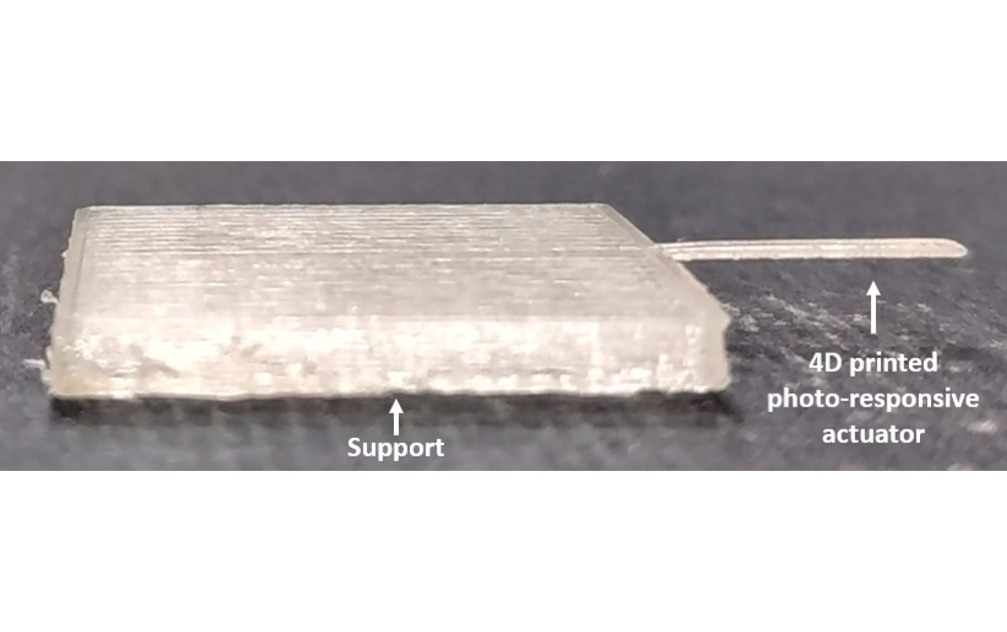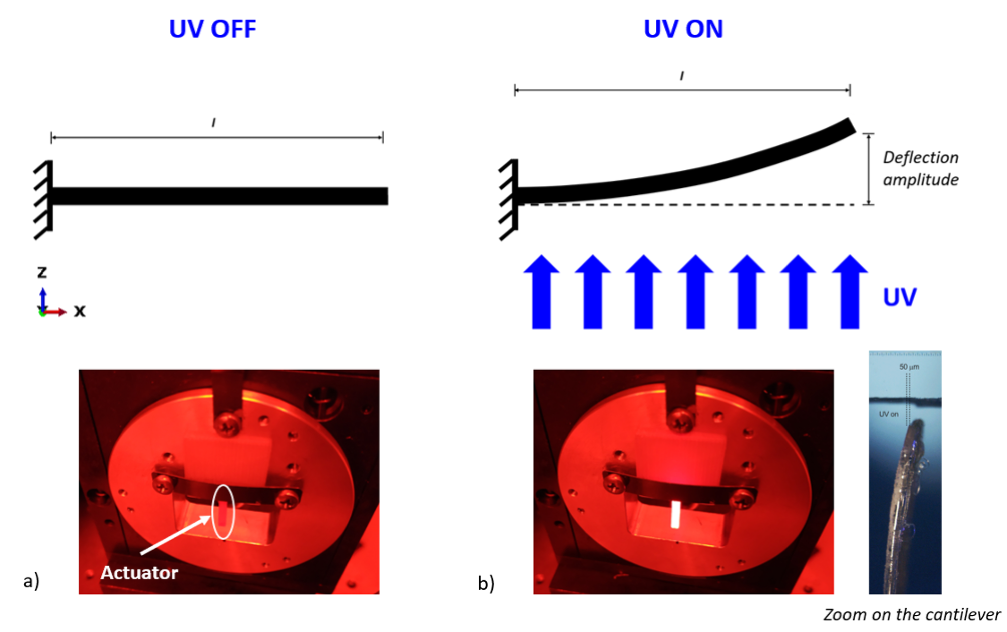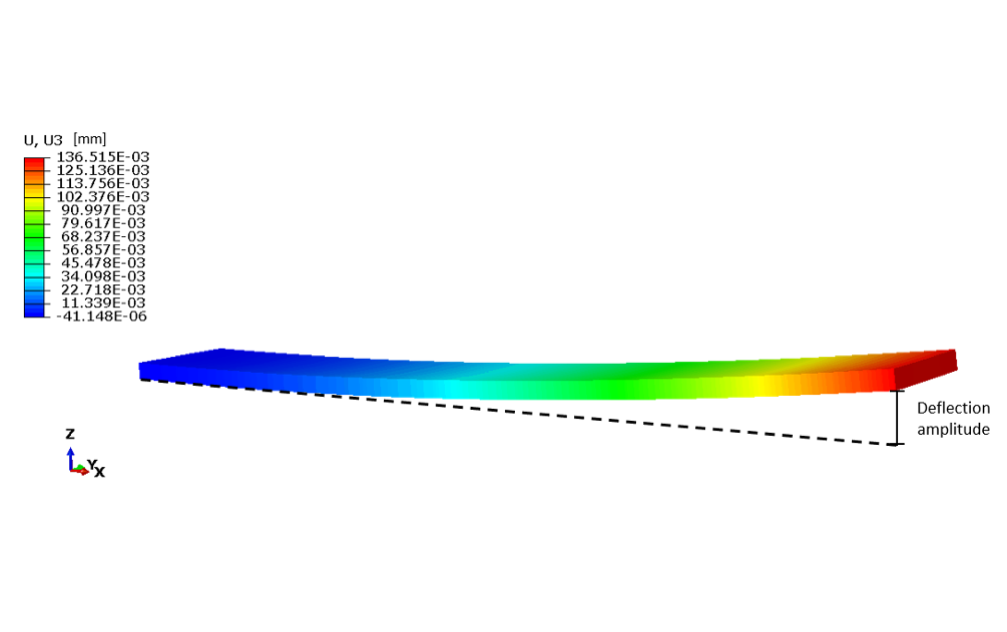3D printing technology of stimuli-responsive materials, also known as 4D printing, is an innovative method for designing and manufacturing functional devices with time-changing shape and properties. 4D printing is highly advantageous for the manufacturing of soft actuators with complex design, suitable for remotely-controlled manipulators and soft robotics. Despite such enormous opportunities, current additive manufacturing technologies are still far from being an effective fabrication platform for optical systems. Light as a stimulus is fascinating because it allows for the actuation of devices without a wired connection to a power source and a physical contact.
Together with colleagues from the National Enterprise for nanoScience and nanoTechnology (NEST) we have designed and studied 4D printed photo-responsive actuators through the combination of an extensive experimental campaign and numerical finite element simulations [1, 2].
The actuators consist of polymeric cantilevers printed by fused deposition modelling (FDM) and functionalized by photochromic molecules. The developed approach allows for printing mm-scaled levers (Fig. 1), whose deflection can be tuned by external ultraviolet laser beams (Fig. 2). Finite elements simulations of the actuation process have been carried out with the software Abaqus/CAE (Fig. 3).
The results of this study pave the way for a novel class of actuators, which are precisely and remotely controlled by light beams, and thus advantageous for autonomous microsystems where an electrical energy source is not feasible. The potential fields of application are numerous, including sensors and soft actuators from the millimeter scale to the nanometer scale, remotely deployable structures in aerospace applications, remotely triggered drug delivery systems, optomechanical systems, tissue engineering and non-invasive surgery.
Press Review
[1] A. Portone, C. De Donno, G. Scalet, S. Marconi, F. Auricchio, L. Persano, D. Pisignano, and A. Camposeo. Light-responsive actuators manufactured by 3D printing technologies. In II International Conference on Simulation for Additive Manufacturing (Sim-AM 2019), 2019.
[2] A. Portone, C. De Donno, S. Marconi, G. Scalet, L. Persano F. Auricchio, D. Pisignano, and A. Camposeo. 3D printed multi-layered soft actuators with embedded photo-responsive molecules. In Photonics West 2020. Society of Photo-Optical Instrumentation Engineers (SPIE), 2020.
April 30th, 2020




